Fluorine-free wear-resistant new era! silike's fluorine-free wear-resistant agent overcomes eu ban to help nylon and pom challenge extreme lifespan!
The 2025 deadline for fluorine-free materials is approaching. Can the wear resistance upgrade of engineering plastics simultaneously cross the compliance red line and the cost cliff? New silicone-based wear-resistant agents offer a new solution.
The Material Revolution Under the Fluorine Ban
The 2023 EU PFAS ban (draft) targets over 6,000 fluorinated chemicals, putting traditional PTFE wear-resistant agents at risk of elimination. The mechanical, automotive, and electronics industries urgently need high-performance fluorine-free alternatives that not only comply but also surpass expectations!
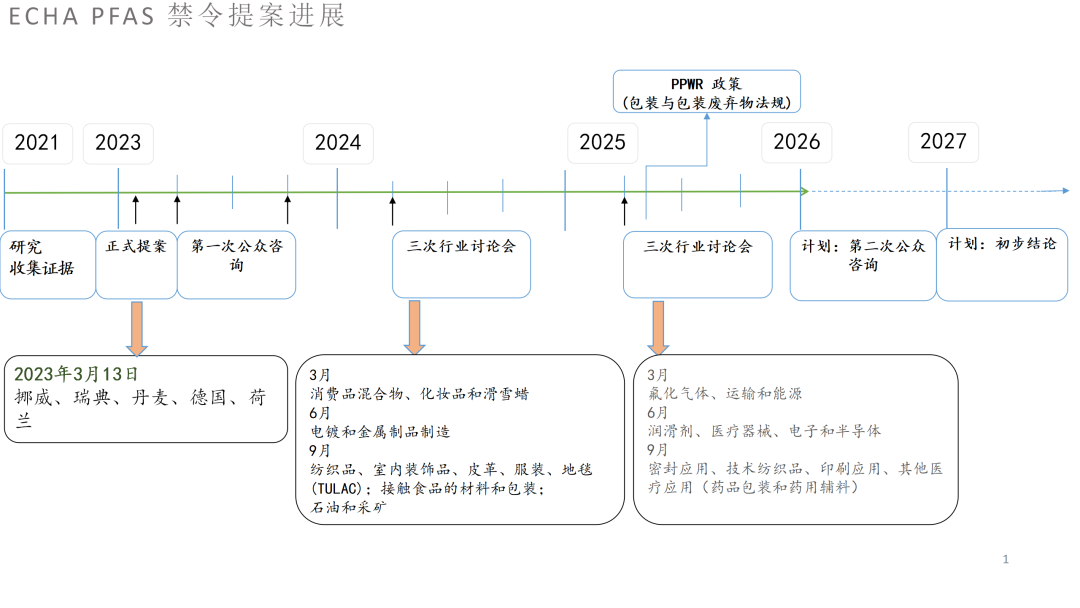
Figure 1: Timeline of the EU legislative process regarding the "Fluorine Ban".
Creating a "Super Wear-Resistant Shield" for the Fluorine-Free Era
The general principle of wear resistance: isolate friction, provide long-lasting protection.
Abrasion-resistant agents generally have poor compatibility with the substrate, forming a lubricating layer on the substrate surface, reducing the surface's coefficient of friction, and decreasing the damage to the substrate by the friction pair.
To reduce damage:
1. Reduce the coefficient of friction: decrease surface heat generation and prevent material softening and deformation.
2. Physical isolation of friction pairs: Block direct contact and reduce wear from the source.

How wear-resistant agents can have a lasting effect:
Self-repairing lubrication layer: continuously forms a new protective film for long-lasting wear resistance.
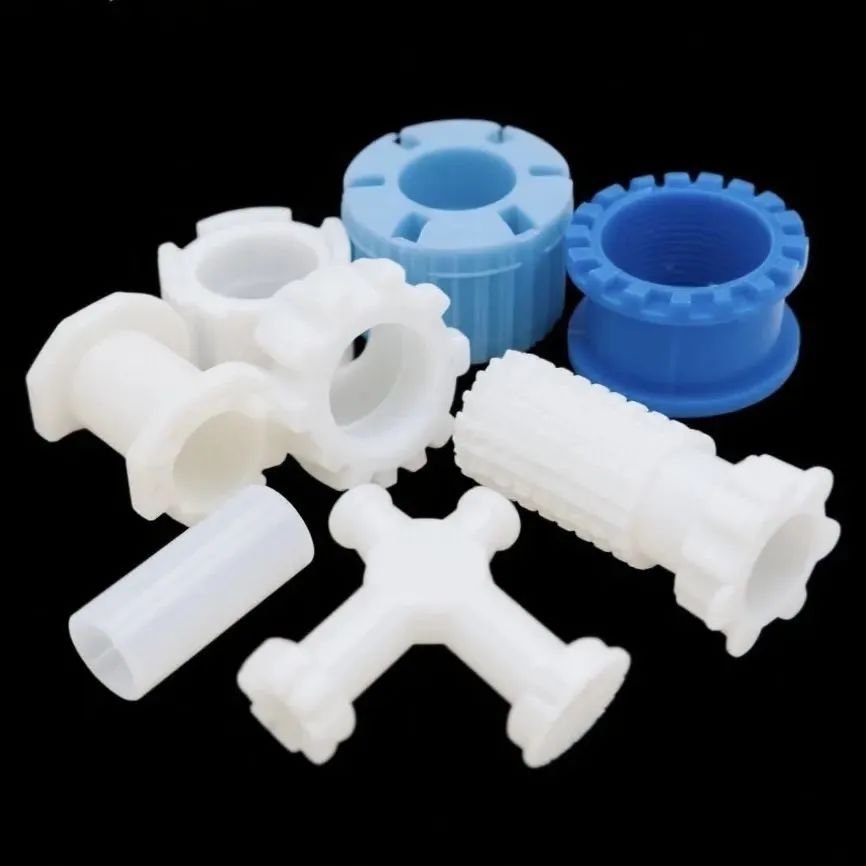
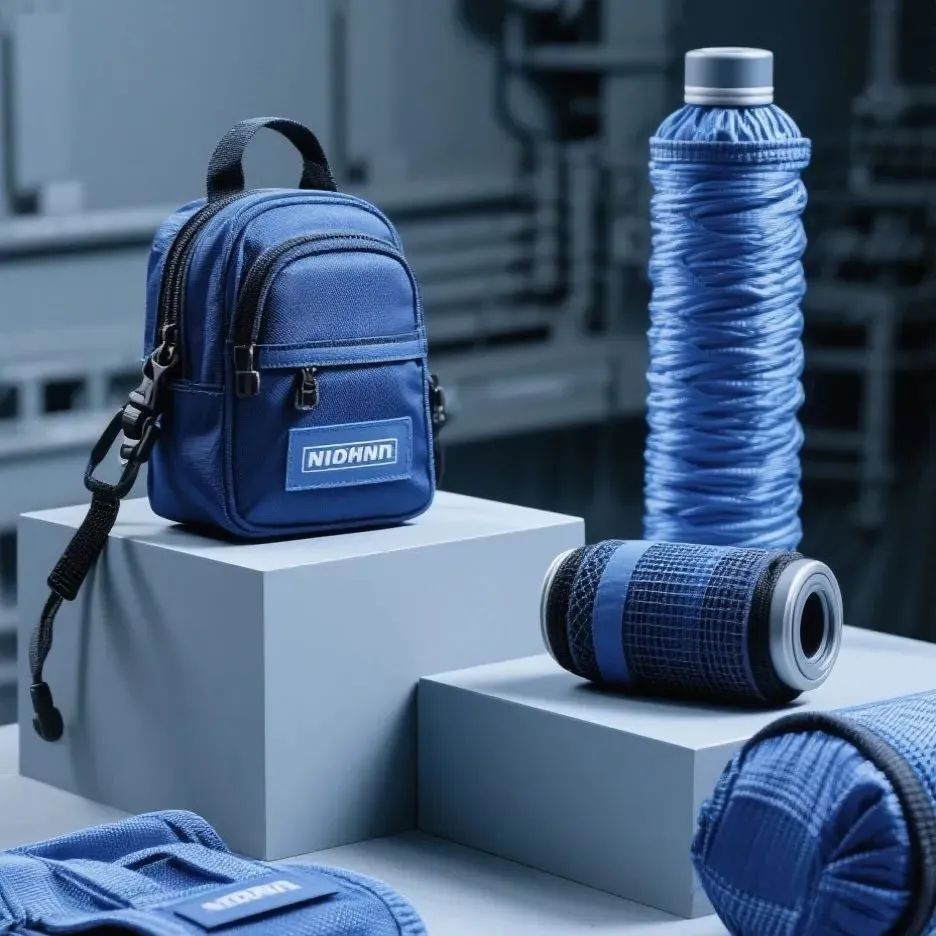
Based on silicone innovation technology, LYSI-704 is committed to:
Complete fluorine-free: Comply with the strictest global environmental regulations.
② Breaking Through the Performance Ceiling: Restructuring the Long-lasting Wear Mechanism
Simplify the production process: Minimal additions for maximum benefits
Core Advantages
Experimental Machine: Sliding Friction and Wear Tester
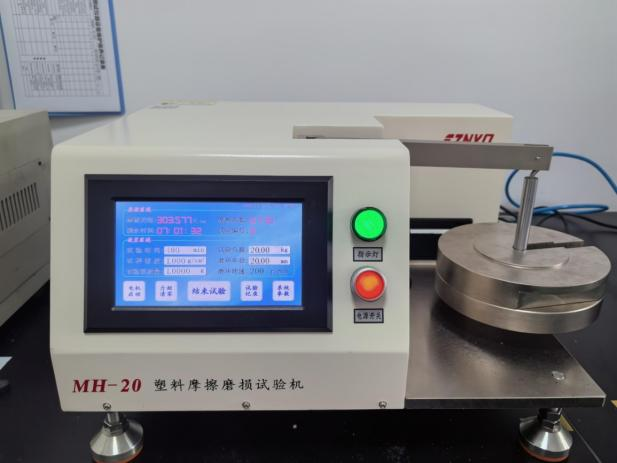
After multiple controlled variable experiments, the following conclusions can be drawn:
1. Excellent wear resistance and durability
Wear Durability
The sample with added LYSI-704 showed a reduction in average friction coefficient of more than 20%. The friction coefficient directly affects mass wear; the lower the friction coefficient, the lower the mass wear. From the data, it can be observed that the wear resistance lifespan of the sample after the addition is significantly improved, with the wear reduced to as low as 1mg!
01 POM

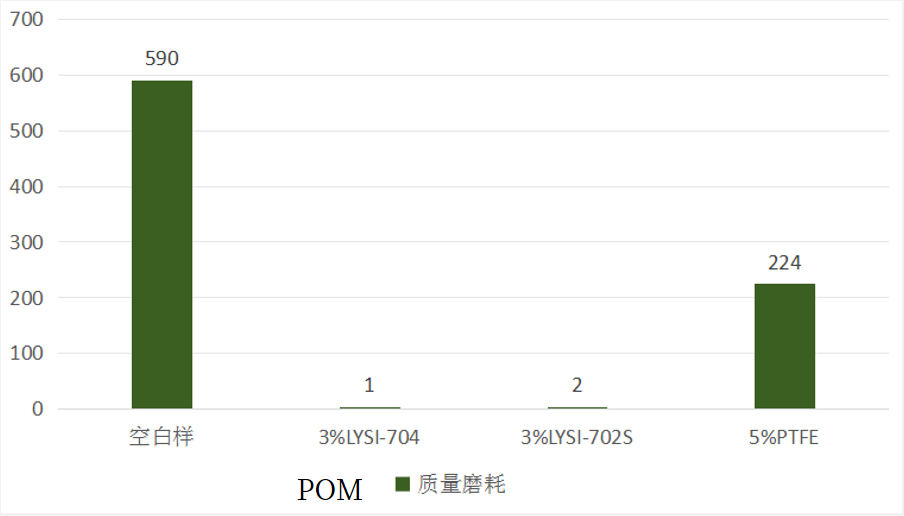
Abrasion test conditions: 10 kg weight, sample 40 kg pressure, duration 24 hours.
In the experiment shown in the figure, the friction coefficient of the blank sample in the POM test is 0.148, and the mass wear is 590mg. The sample with added PTFE anti-wear agent shows a slight decrease in friction coefficient and wear amount, but still as high as 0.12 and 224mg. In contrast, the sample with 3% of our new silicone anti-wear agent LYSI-704 shows a decrease in friction coefficient to 0.09 and a reduction in wear mass to 1mg, with wear resistance life improved by 590 times!
02 PA66
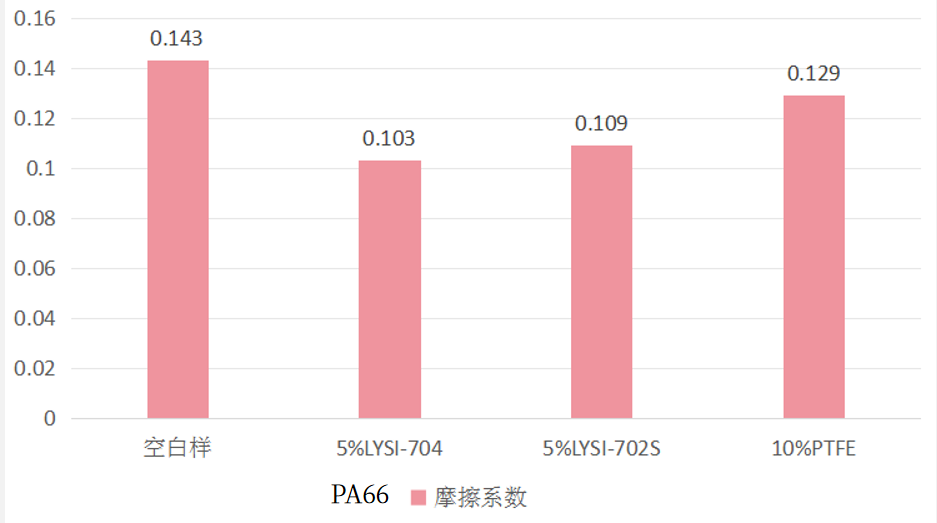
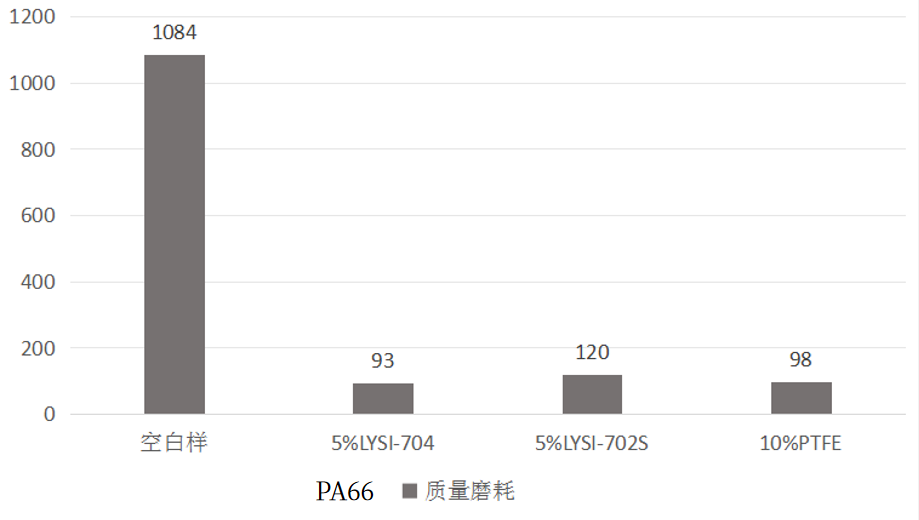
Abrasion test conditions: 10 kg weight, sample 40 kg pressure, duration 3 hours.
In PA66 material, the friction coefficient of the blank sample is 0.143, and the mass wear reaches 1084mg. Although the sample with added PTFE and LYSI-702S shows a significant reduction in friction coefficient and mass wear, it still does not match the friction coefficient of LYSI-704 at 0.103 and mass wear at 93mg. It is evident that LYSI-704 remains the best wear-resistant choice in PA66.
03 PA6
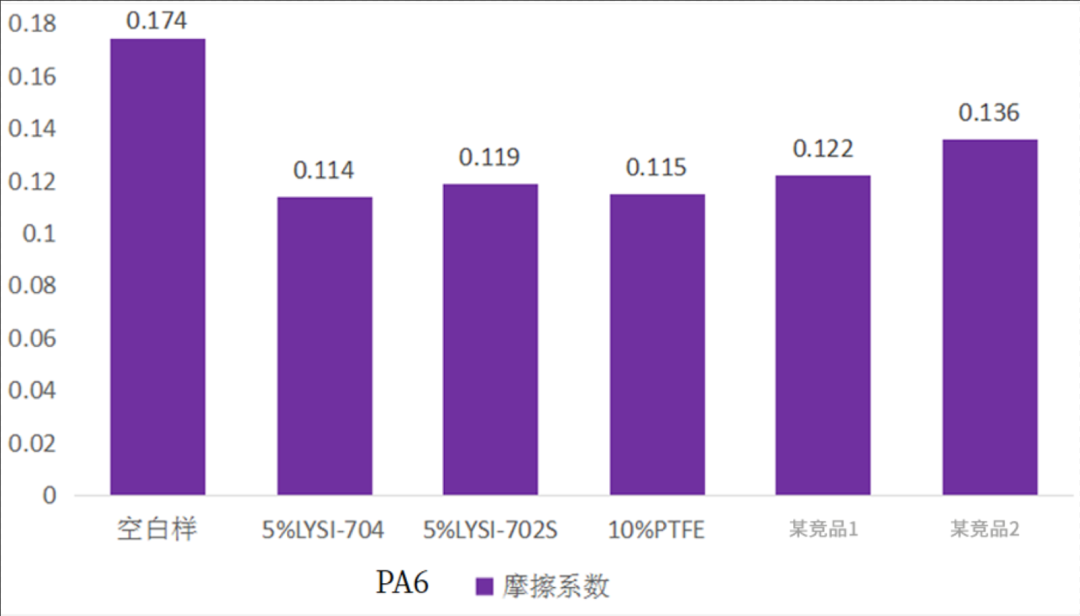
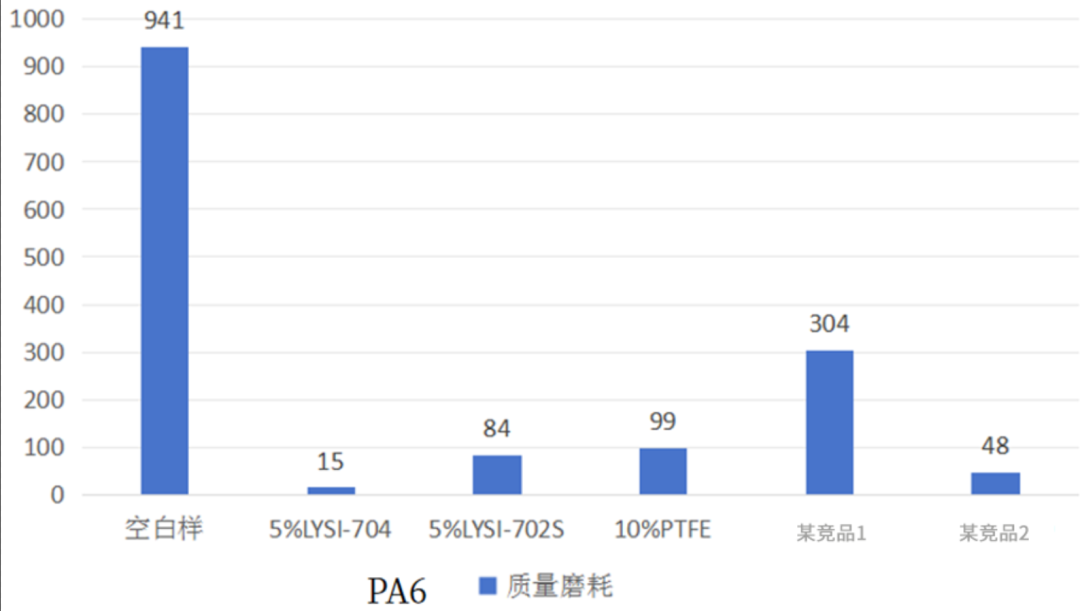
Abrasion test conditions: 10 kg weight, 40 kg pressure on the sample, duration 1 hour.
In the PA6 material, a competitor's product was added as a control experiment. It can be observed that the friction coefficient of the blank PA6 sample is 0.174, with a mass wear of 941mg. The competitor's product, with a 5% addition, has a friction coefficient of over 0.119, and the wear mass is over 48mg. The PTFE with a higher addition level has a friction coefficient of 0.115, and the mass wear reaches 99mg. However, the LYSI-704 at the same low addition level (5%) has the lowest friction coefficient of 0.114, and the mass wear is as low as 15mg, indicating its remarkable effect on PA6, far surpassing products of the same category.
2. Machinability and Revolutionary Nature
RevolutionaryProcessing Friendliness
Easy Dispersion Technology: Dispersion without Agglomeration for More Friendly Processing
Zero Dust Particles: Eliminate Workshop Pollution, Ensure Occupational Health
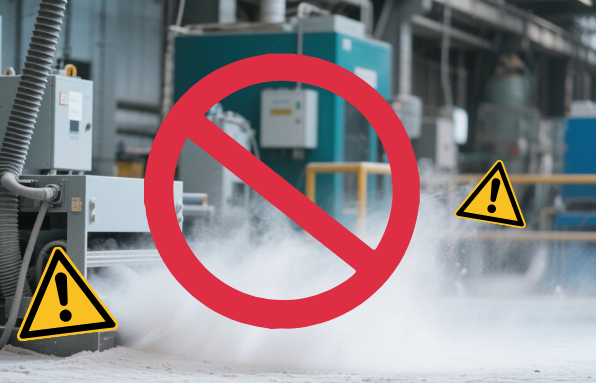
3. Fluorine-Free Compliance and Cost Optimization
Fluorine-FreeCompliance&Cost Optimization
Trace addition (recommended 2%-5%)
The overall production cost has significantly decreased.
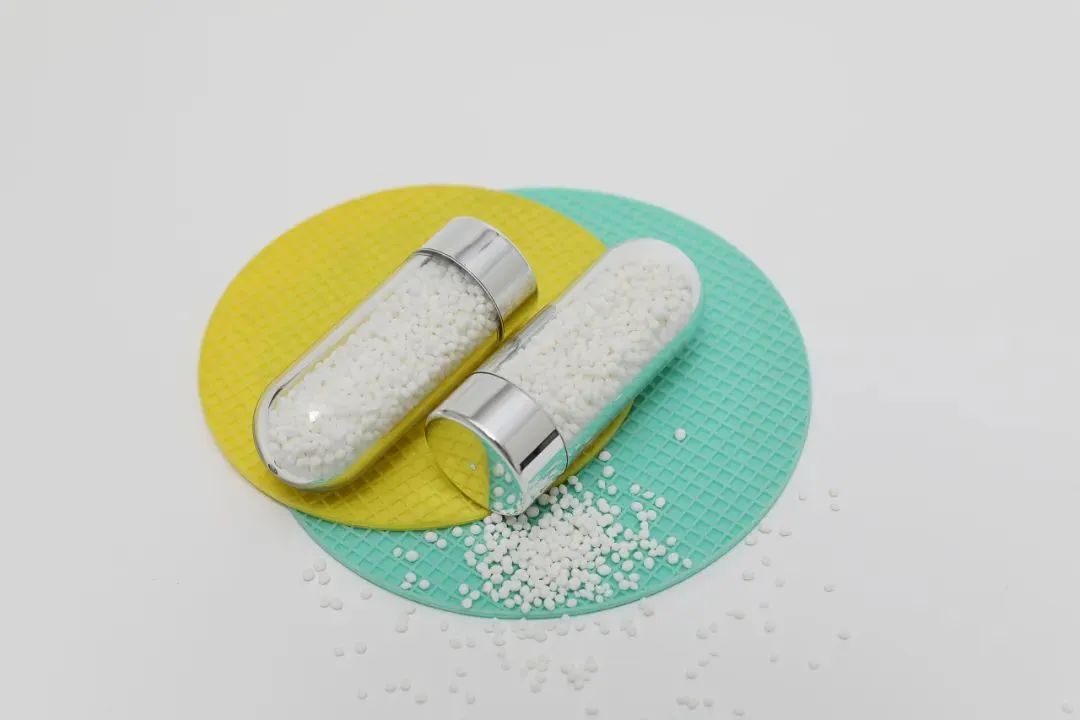
Transparency Technology Statement
Experimental test data indicate that after the addition of the anti-wear agent, the tensile strength and flexural strength of the samples are affected to varying degrees, but the extent of the impact is within a controllable range.
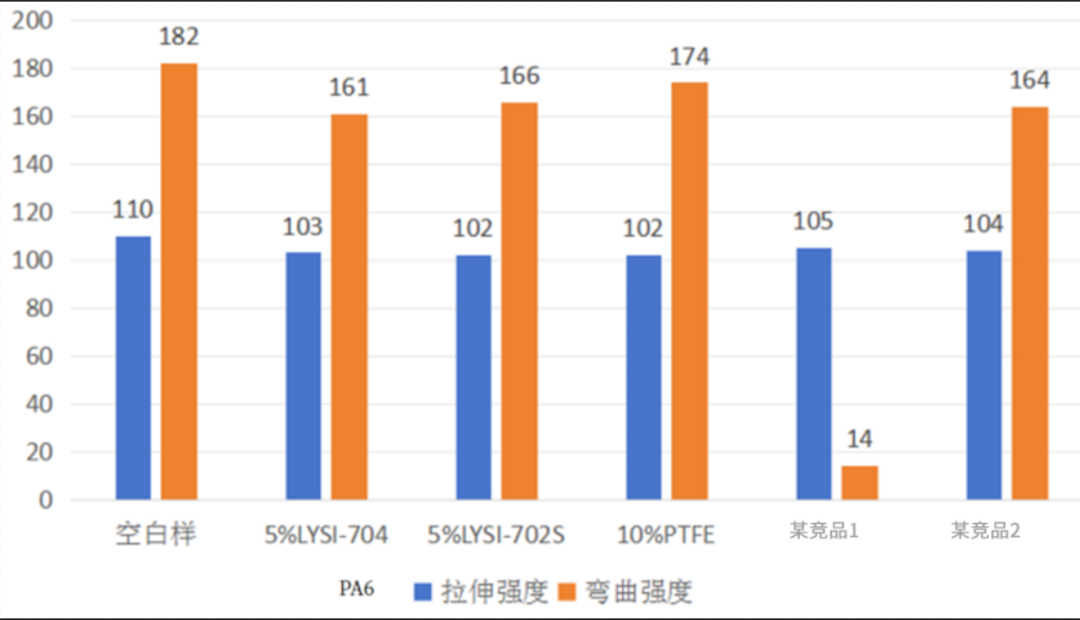
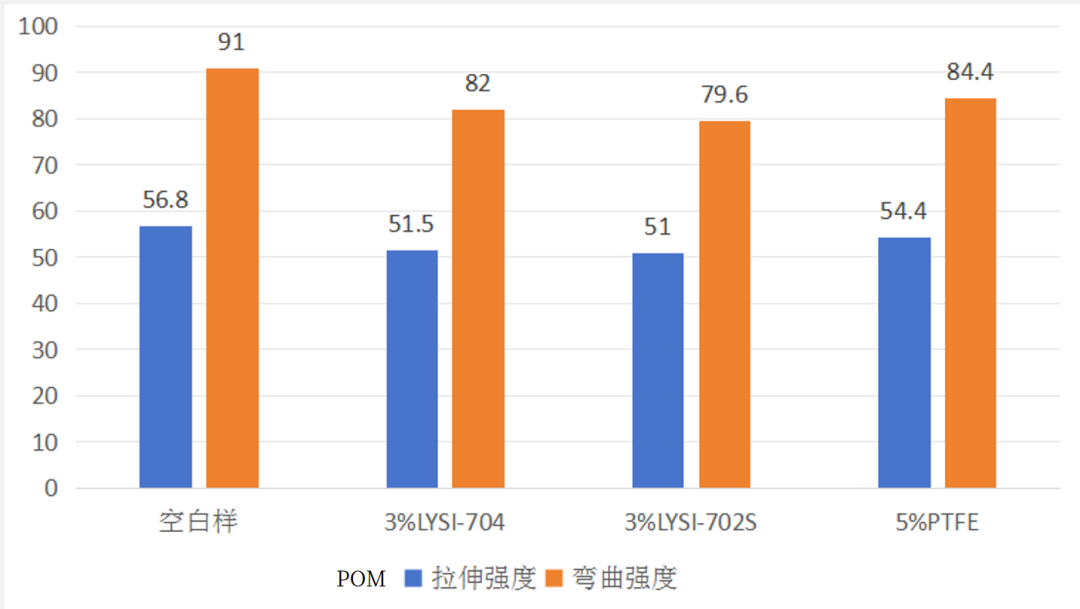
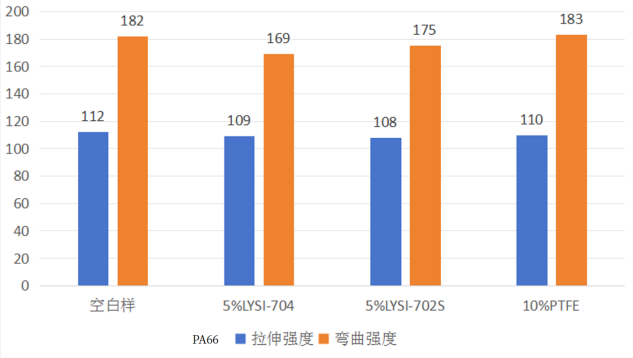
With fluorine-free technology, build a sustainable industrial future together.
As environmental regulations reshape global supply chains, the upgrading of wear-resistant materials has surpassed mere performance competition, becoming a key component of the green industrial transformation.
Silico's new organic silicon wear-resistant agent carries a triple mission: penetrating the EU PFAS ban barrier with a 100% fluorine-free structure to safeguard the export lifeline of enterprises; achieving a breakthrough in wear resistance through organic silicon molecular design, providing long-term protection in substrates such as POM and nylon; ensuring zero dust particles from the source to protect workers' health, allowing technological advancement and humanistic care to coexist.
When the ban on fluorine is activated, Slike is opening a new track for global manufacturers.Fluorine-free is not a compromise, but a leap in next-generation wear-resistant technology!
【Copyright and Disclaimer】The above information is collected and organized by PlastMatch. The copyright belongs to the original author. This article is reprinted for the purpose of providing more information, and it does not imply that PlastMatch endorses the views expressed in the article or guarantees its accuracy. If there are any errors in the source attribution or if your legitimate rights have been infringed, please contact us, and we will promptly correct or remove the content. If other media, websites, or individuals use the aforementioned content, they must clearly indicate the original source and origin of the work and assume legal responsibility on their own.
Most Popular
-

List Released! Mexico Announces 50% Tariff On 1,371 China Product Categories
-

EU Changes ELV Regulation Again: Recycled Plastic Content Dispute and Exclusion of Bio-Based Plastics
-

Mexico officially imposes tariffs on 1,400 chinese products, with rates up to 50%
-

Clariant Unveils Cost-Cutting Plan Details, Plans to Shut Down Multiple Plants
-

Nissan Cuts Production of New Leaf EV in Half Due to Battery Shortage






